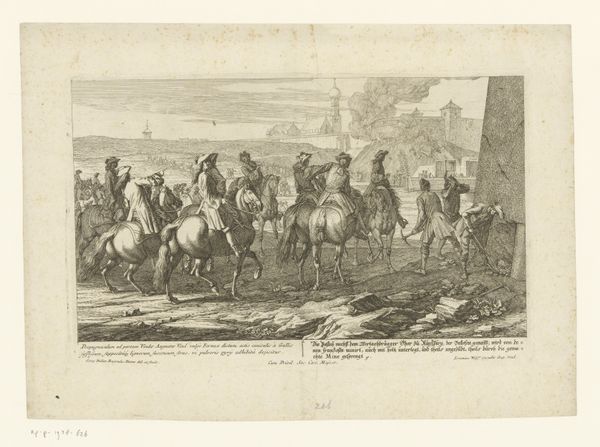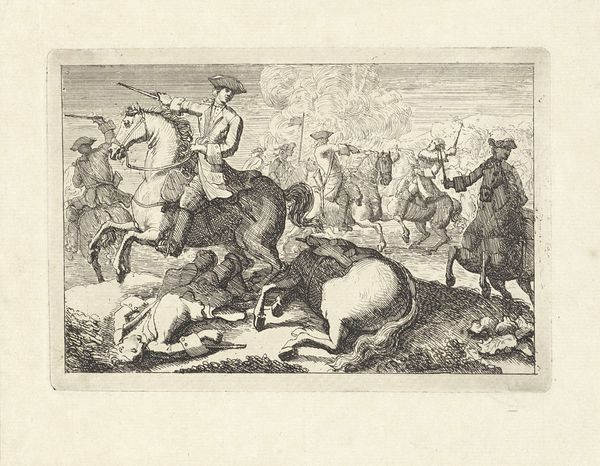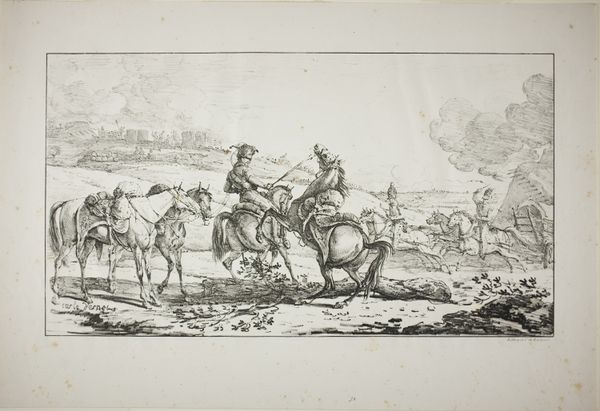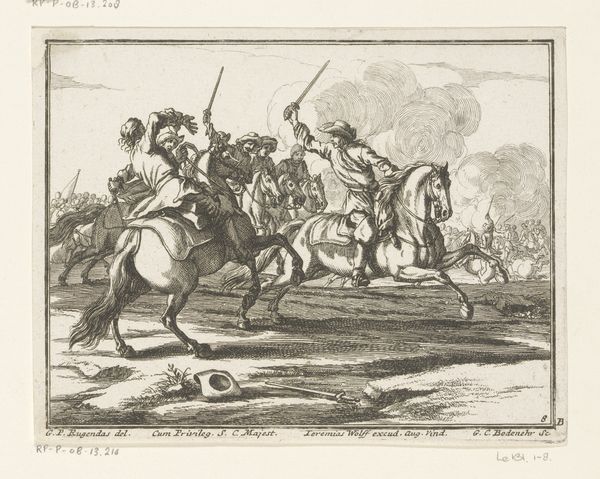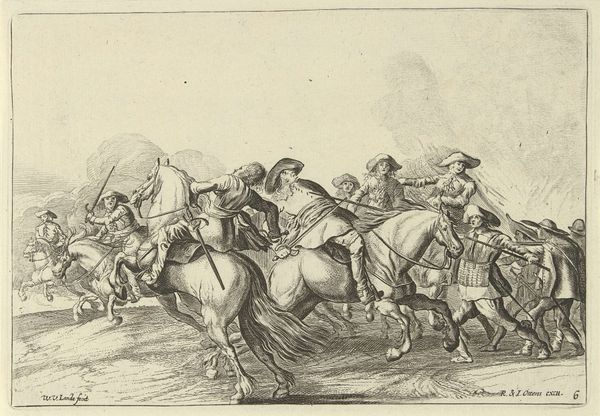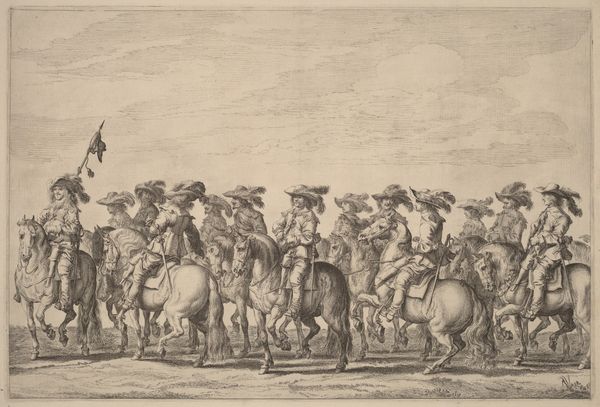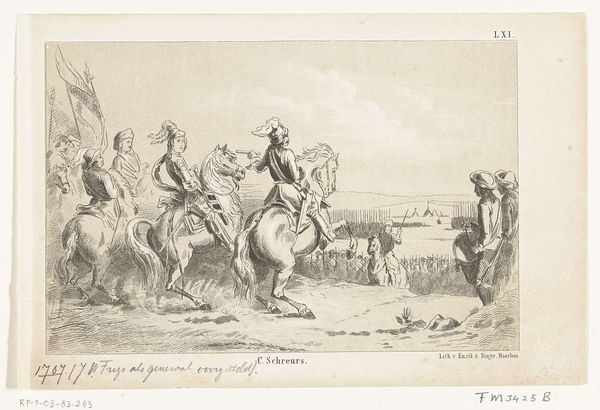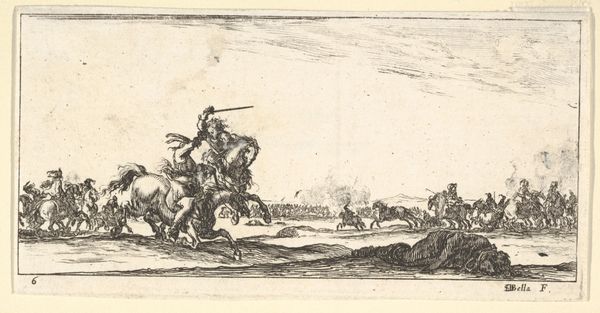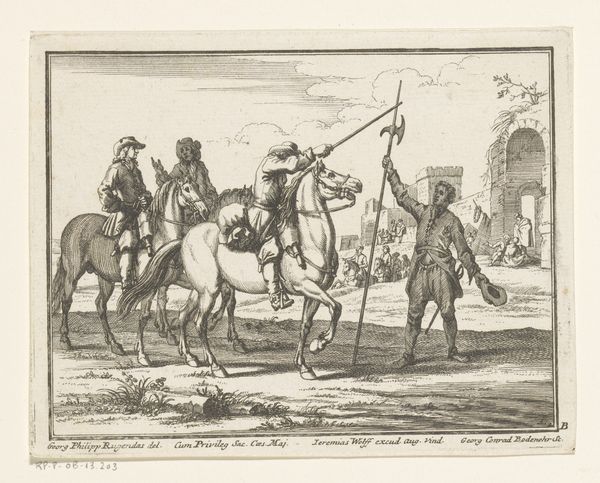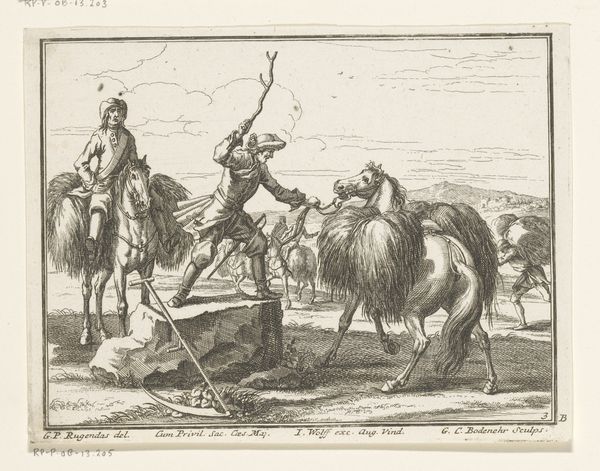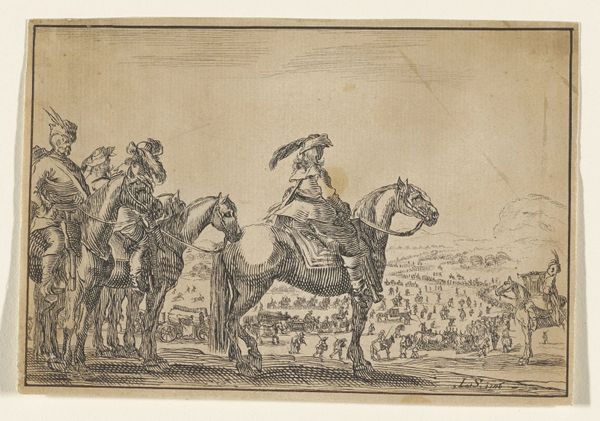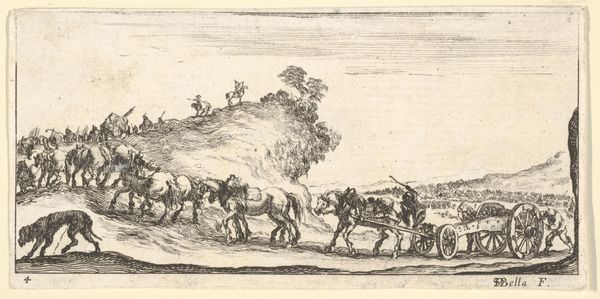
Dimensions: height 163 mm, width 242 mm
Copyright: Rijks Museum: Open Domain
Curator: What an interesting print! The work is "Willem Vleertman and Marlborough before the Battle of Höchstädt, 1704." It's an engraving dating from sometime between 1853 and 1861, though it depicts events much earlier. Editor: It strikes me as quite bleak for a historical depiction. The landscape seems barren, almost apocalyptic. I'm intrigued by the artist’s choice to emphasize desolation even as he records what should be a moment of high military drama. Curator: That barrenness, I think, connects deeply with how 19th-century viewers understood conflict, not necessarily as glory but as an almost Biblical devastation. The symbols—the skeletal trees on the horizon, for example—feel aligned with Romantic notions of nature reflecting the somber fate of humans. Editor: The power dynamics are equally striking. Marlborough, centrally positioned on a brilliant white horse, exudes authority. Yet, this authority appears imposed, almost fragile against the vast emptiness around him. There’s a tension between his elevated status and the potential futility of his actions within such a landscape. Curator: Indeed! Think of the horse itself, a frequent symbol of nobility and martial power. The contrast with the rather sickly, exhausted animals elsewhere suggests a carefully constructed narrative of leadership. Vleertman’s presence, on a darker steed, slightly behind Marlborough, further enhances that hierarchy. There's the faint ghost of echoes there, perhaps not always for the better. Editor: It's impossible to view such images without considering the complex power structures inherent in conflict and its portrayal. How does glorifying such historical leaders normalize continued conflict? Even this bleak depiction still elevates Marlborough, perhaps inadvertently influencing perspectives on power and the justifications of historical injustices. Curator: A powerful observation. Visual hagiography often serves more than just historical record. What this artwork really captures is a constructed memory – one tailored to evoke particular emotional and political reactions long after the actual battle. The symbols chosen contribute profoundly to how later generations understood not just that event, but the wider context of conflict. Editor: Examining it has certainly prompted a renewed questioning about who benefits from these portrayals. Thanks! Curator: The pleasure's all mine, to connect present concerns with echoes of symbolic language in these old battle narratives.
Comments
No comments
Be the first to comment and join the conversation on the ultimate creative platform.
